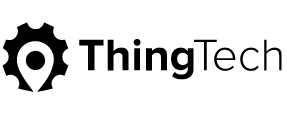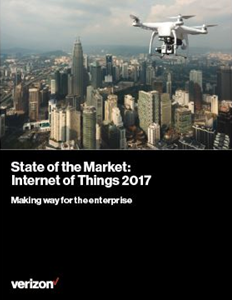Fleeting Moments in IoT: Part 1, Finding Your Lane
Selling IoT (Internet of Things) to organizations operating a fleet can sometimes feel like asking a stranger if their spouse is cheating. It’s after business hours; do you know where your trucks are? If not, can you trust the word of your drivers and customers? How do you know if/when a job is scheduled, in progress, or completed? And if a driver is late, or a no-show, how long before you know about it?
To overcome these challenges, fleet managers have taken a mobility approach. There was a time when flip phones with walkie-talkie features provided advanced communication between drivers and managers. But the inherent issue of cell phone use while driving caused major concerns, if not road accidents.
As M2M (machine to machine) technologies flourished, the affordability of GPS-and-cellular-based fleet tracking drew attention away from smartphones and tablets, and towards the IoT. New research by Verizon shows that 73% of executives are either researching or currently deploying an IoT solution. If your organization is not in the IoT game, it won’t be long before you are.
The fundamental problem with managing a mobile workforce is that you may not realize something’s wrong until it’s too late. Imagine that Lisa, a delivery person, hits traffic on the fastest route to her customer. Lisa uses GPS navigation on her iPhone to find a less congested route. But unfortunately, she still arrives more than 20 minutes late to her destination. The customer is upset, because this is the 2nd late delivery in as many months. How would you know what happened in this case without speaking with Lisa or her customer?
The example above reveals why the IoT has made a significant impact on fleet and mobile workforce management. APIs (application program interface) take the IoT even a step further by enabling integration between devices, systems and applications. API-enabled solutions like our ThingX™ Platform bring data together, and provide clarity to your 360° view of the business.
Assume for a moment that Lisa’s company hasn’t adopted GPS fleet tracking. We may gather from Lisa’s quick thumb-work on her iPhone that she’s rewarded or punished based on her performance. The problem with this approach is that it could potentially undermine satisfactory behavior over the long run. What’s more, it doesn’t solve for traffic congestion, vehicle breakdowns that lead to costly repairs, accidents, or meeting compliance with safety regulations. Reward and punishment need to be engineered into a complete fleet management system to be effective.
Also, what if a survey tool is used to measure customer satisfaction in this example? There are pros and cons to consider when using tools, such as Net Promoter Score (NPS) by Satmetrix. NPS is designed around the question, “How likely are you to recommend this business to a friend or colleague?” Questions related to a specific transaction could be erroneously influenced by subjective feelings about the overall relationship with your organization, resulting in skewed data. In this example, the customer may feel inclined to rate Lisa based on the last two experiences with the company instead of just the most recent.
Lisa’s company faces a complex task anticipating traffic issues, service level expectations and customer satisfaction. That’s why more organizations are turning to an API-enabled IoT platform for seamless integration across business systems and applications. ThingTech’s GPS fleet tracking and field service solutions together provides a real-time view of the data points that influence your business growth—routes, vehicle location and movement, cargo status, inventory/stock levels, fuel consumption, driver behaviors, arrival/departure times, job start/stop times. Plus, we integrate work orders into real-time dispatch, resulting in routes that can be optimized up-to-the-minute.
Finding the right lane, which leads to digital transformation is a major undertaking. There’s no one-size-fits-all solution. But making better, data-driven decisions starts with integrating data that provides instant visibility into your fleet operations.
In Part 2 of this three-part-series, we’ll examine the best KPIs/metrics to measure when launching a fleet management proof of concept or pilot.
Changing the future happens today. Contact us anytime to discuss your GPS & cellular fleet management needs, or to schedule a free demo

